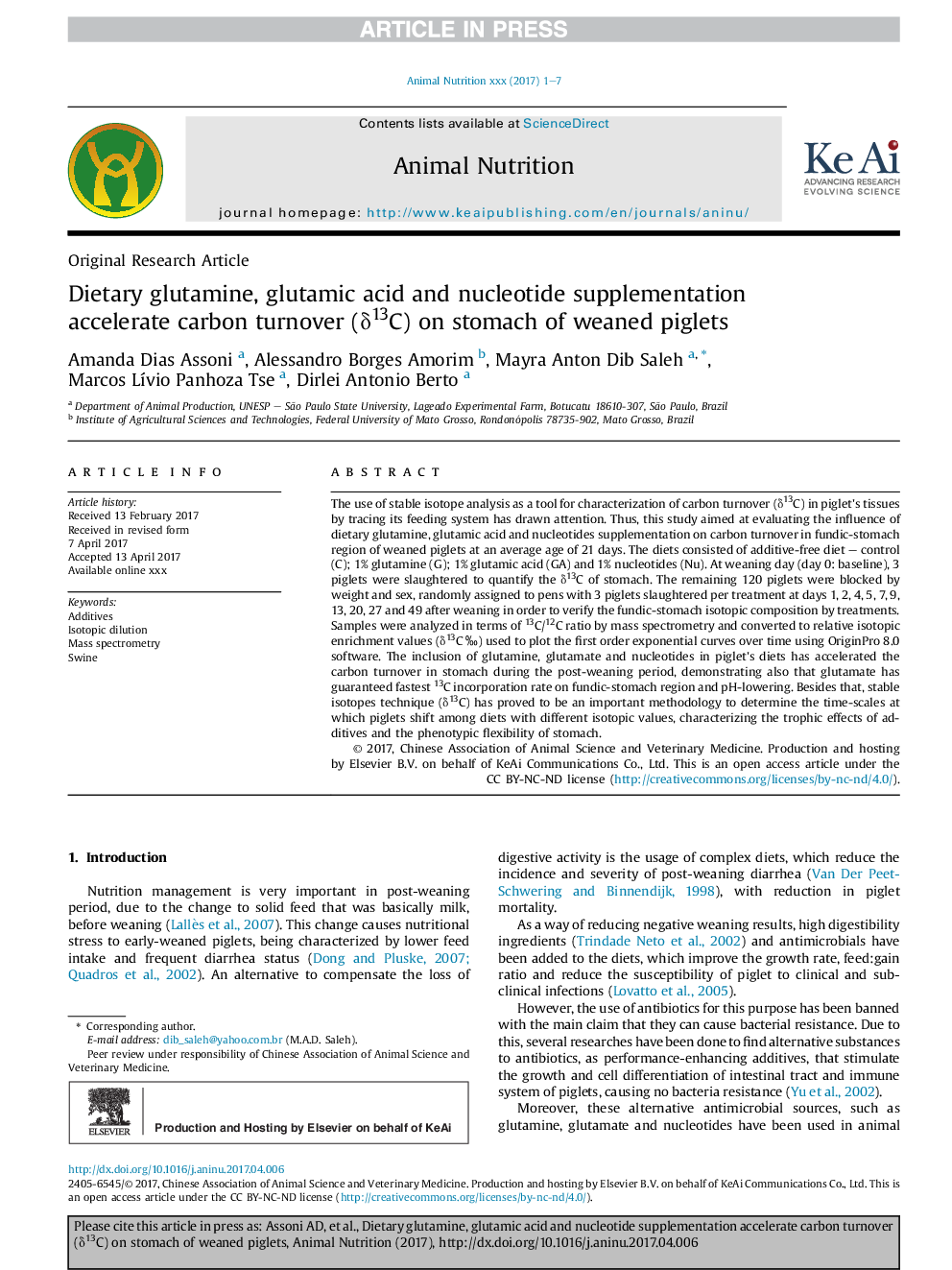| Article ID | Journal | Published Year | Pages | File Type |
|---|---|---|---|---|
| 8882563 | Animal Nutrition | 2017 | 7 Pages |
Abstract
The use of stable isotope analysis as a tool for characterization of carbon turnover (δ13C) in piglet's tissues by tracing its feeding system has drawn attention. Thus, this study aimed at evaluating the influence of dietary glutamine, glutamic acid and nucleotides supplementation on carbon turnover in fundic-stomach region of weaned piglets at an average age of 21 days. The diets consisted of additive-free diet - control (C); 1% glutamine (G); 1% glutamic acid (GA) and 1% nucleotides (Nu). At weaning day (day 0: baseline), 3 piglets were slaughtered to quantify the δ13C of stomach. The remaining 120 piglets were blocked by weight and sex, randomly assigned to pens with 3 piglets slaughtered per treatment at days 1, 2, 4, 5, 7, 9, 13, 20, 27 and 49 after weaning in order to verify the fundic-stomach isotopic composition by treatments. Samples were analyzed in terms of 13C/12C ratio by mass spectrometry and converted to relative isotopic enrichment values (δ13C â°) used to plot the first order exponential curves over time using OriginPro 8.0 software. The inclusion of glutamine, glutamate and nucleotides in piglet's diets has accelerated the carbon turnover in stomach during the post-weaning period, demonstrating also that glutamate has guaranteed fastest 13C incorporation rate on fundic-stomach region and pH-lowering. Besides that, stable isotopes technique (δ13C) has proved to be an important methodology to determine the time-scales at which piglets shift among diets with different isotopic values, characterizing the trophic effects of additives and the phenotypic flexibility of stomach.
Related Topics
Life Sciences
Agricultural and Biological Sciences
Animal Science and Zoology
Authors
Amanda D. Assoni, Alessandro B. Amorim, Mayra A.D. Saleh, Marcos L.P. Tse, Dirlei A. Berto,
